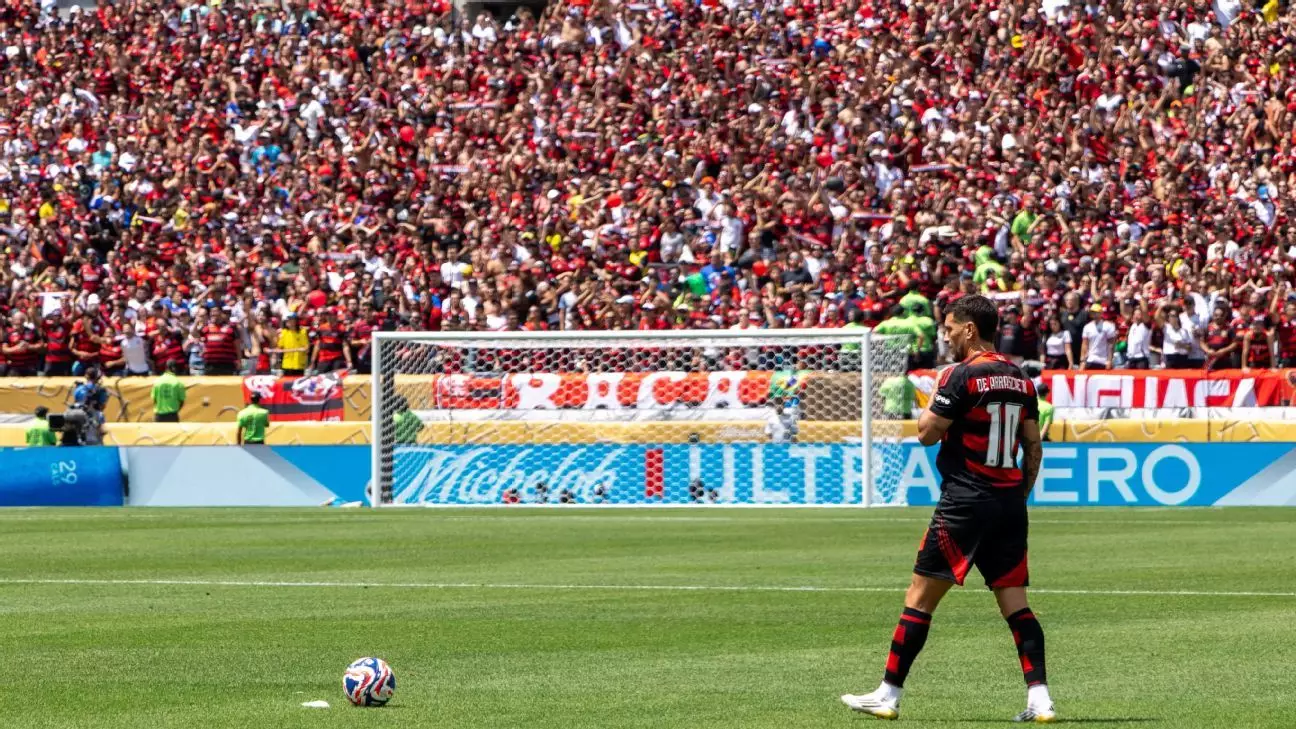Brazil’s aspiration to host the next FIFA Club World Cup is not merely a dream; it’s a continuation of a centuries-old tradition that loves to celebrate the beautiful game. With a robust football culture, Brazil recognizes the opportunity this global event presents, particularly after the ongoing inaugural 32-team edition has showcased the brilliance of South American football. Despite the hiccups — sparse crowds and harsh weather conditions — the tournament is salvaged by the unwavering passion of South American fans and players alike. Their presence has become a defining feature, transforming stadiums into fervent cauldrons of support.
The allure of the Club World Cup has grown significantly. One could argue it is essential for South American teams to finally receive recognition on a grand scale. Here lie champions of a rich football heritage, currently at the forefront of international competition. The South American representation, with fierce clubs like Botafogo, Flamengo, Palmeiras, and River Plate, not only brings talent but also an indomitable spirit that revitalizes the tournament. While the FIFA Club World Cup is still shaping up, there’s little doubt that its values and excitement echo deeply across the continent.
Why Supporters Matter: A Demonstration of Pride
The fervor of South American fans is palpable and essential. The atmosphere created by these supporters diminishes the potential downturns associated with the competition’s organization; they breathe life into what could otherwise be a lifeless event. The Brazilian and Argentine contingents have made their presence known, turning the arenas into vibrant zones of chanting and energy. In fact, without their enthusiastic attendance, one could contend this tournament would resonate lower on the scale of global excitement.
Five of their six representatives are excelling as they approach the significant stages of this event. While Boca Juniors struggles, their effort offers a dose of reality against the backdrop of otherwise encouraging performances. The matchups between different playing styles certainly add drama, highlighting the variations inherent in South American football. The culture is about defiance — of taking chances and pushing limits. This culture goes beyond the realm of competition; it’s about national pride.
A Tactical Evolution: Adapting to Win
The strategic evolution of South American clubs has been commendable. Different approaches to gameplay, particularly from clubs like Flamengo, Palmeiras, and Botafogo, showcase a blend of creativity and tactical discipline. Flamengo’s brush with disaster during the Libertadores demands attention, revealing the risks coaches take in prioritizing player fitness over immediate results. Such risks can be grievous, but they speak to a bigger picture regarding player management — essentially balancing a flourishing team with the demand for performances on the global stage.
Botafogo’s triumph over Paris Saint-Germain offers a case study on tactical excellence. Their approach, marked by steadfast defending, disrupted the European giants’ flow and showcased a more calculated version of Brazilian football that defies the stereotype of disorganization. The inclusion of players who can control the flow — as noted with Flamengo’s new signing Jorginho — breeds optimism for their chances at true success in the tournament.
The commitment to a well-oiled squad under the shrewd management of their respective coaches revamps the mindset surrounding South American football. With hungry competitors eyeing glory, there is a resurgence of hope that these clubs can challenge and even triumph over their European counterparts.
Challenging the Odds: The Fight Ahead
Moving forward into the knockout rounds, the stakes have never been higher. Botafogo’s forthcoming clashes against European opposition will define their legacy. The conditions under which the tournament unfolds could either amplify their fortunes or reveal vulnerabilities. Indeed, the Pasadena heat could become both an ally and an adversary, particularly for seasoned players navigating through rigors of an intensified competition.
Meanwhile, clubs like Palmeiras and River Plate face scrutiny not just from their opponents but also from the expectations that accompany such storied history. With River Plate balancing attacking flair against suspended key players, one gains insight into the trials that come with greatness. The strategies these clubs employ will need to evolve rapidly as the group phase nears its conclusion.
In this riveting competition where every goal counts and every match could change the narrative, South American clubs have demonstrated they are not merely participants — they are formidable contenders ready to wield their heritage as both shield and sword. Expect the crowds to surge and the stakes to rise, as this edition of the FIFA Club World Cup visibly demonstrates that the future is bright for South America in global football.

